FW
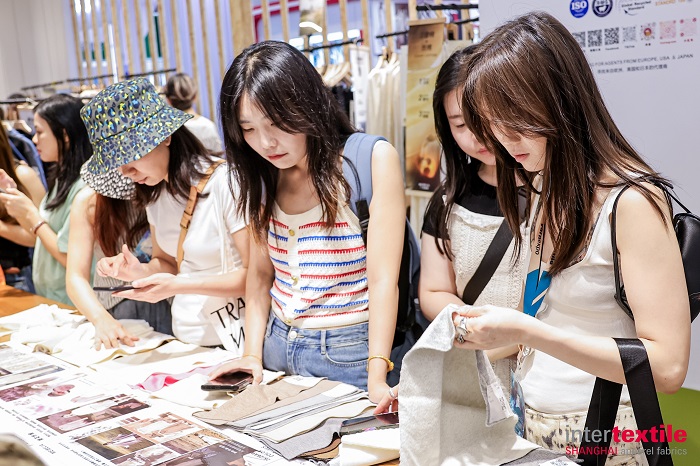
Intertextile Shanghai 2024, held from August 27-29, transformed into a vibrant hub for the global textile industry, with 'Fashionable Fabrics' taking center stage as the show's highlight. The event was a confluence of innovation, trends, and knowledge-sharing, showcasing the dynamic fabric landscape and its evolving role in the fashion world.
Trend Tours: Immersive fabric exploration
The Trend Tours offered an immersive journey through the world of fabrics, guiding visitors through the latest developments and inspirations. From sustainable fibres to innovative textures, the tours unveiled the diverse tapestry of fabrics shaping the fashion industry.“The Trend Tours were a fantastic way to experience the show's highlights and discover new fabric trends. The curated selection provided a valuable overview of the market and sparked creative ideas for our upcoming collections.”Observed Maria Rodriguez, Designer, Zara
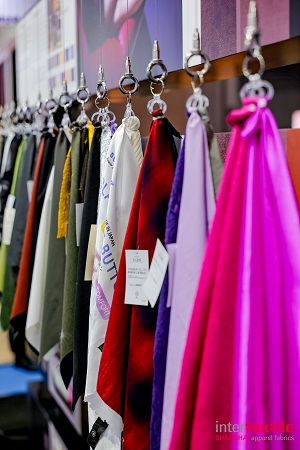
Fabric China Trends Forums: Insights into market dynamics
The Fabric China Trends Forums provided a platform for industry experts to share their insights into the latest market trends and forecasts. The discussions delved into consumer preferences, technological advancements, and sustainable practices, offering a comprehensive understanding of the evolving fabric landscape.
A panel discussion on 'Sustainable Fabrics: The Future of Fashion' highlighted the growing demand for eco-friendly materials. Speakers presented case studies showcasing successful sustainable initiatives, inspiring attendees to embrace responsible practices in their fabric choices.
"Sustainability is not just a trend; it's an imperative for the textile industry. Innovative, eco-friendly fabrics are the future of fashion." Said a renowned designer, Fabric China Trends Forums.
'Fabric to Fashion' by THEi: Bridging the Gap
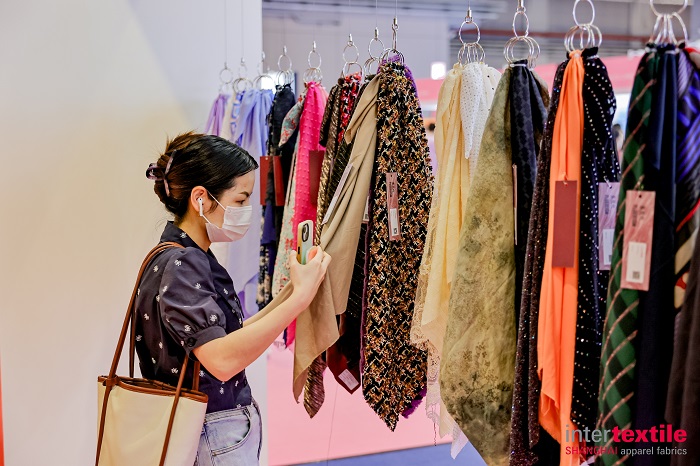
The 'Fabric to Fashion' showcase, presented by THEi (Technological and Higher Education Institute of Hong Kong), offered a unique perspective on the fabric-to-fashion journey. Through interactive displays and presentations, the showcase demonstrated how fabrics are transformed into stunning garments, emphasizing the crucial role of fabric selection in fashion design.“'Fabric to Fashion' was an eye-opening experience. Witnessing the creative process from fabric to finished garment was truly inspiring. It reinforced the importance of fabric choice in bringing fashion designs to life.”Says overwhelmed Emily Chen, Fashion Student, Parsons School of Design
Trends Seminar: Navigating the fabric landscape
The Trends Seminar provided a comprehensive overview of the latest fabric trends, guiding attendees through the vast fabric landscape. Experts shared their insights into colour palettes, textures, patterns, and technological innovations, empowering attendees to make informed fabric choices for their fashion creations.“The Trends Seminar was a treasure trove of information. The expert presentations offered valuable insights into the latest fabric developments, helping us navigate the ever-changing fashion landscape.”Says David Kim, Fabric Sourcing Manager, H&M
Fashionable Fabrics: A resounding success
Intertextile Shanghai 2024 was a resounding success, solidifying its position as a leading platform for the global textile industry. The 'Fashionable Fabrics' showcase, coupled with engaging activities and insightful knowledge-sharing, created an enriching experience for attendees. The event fostered collaboration, innovation, and a deeper appreciation for the artistry and impact of fabrics in the world of fashion.
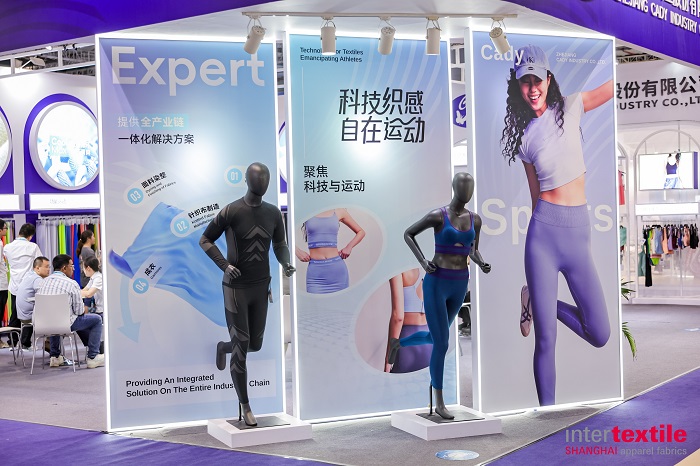
Intertextile Shanghai 2024, held from August 27-29, underscored the rising prominence of functional fashion, where style seamlessly merges with purpose. Showcasing cutting-edge technologies and sustainable solutions, the event highlighted how clothing can elevate our everyday lives, offering comfort, performance, and environmental consciousness.
Functional Lab: Unveiling the future of fashion
The Functional Lab stood as a testament to the show's dedication to innovation. Here, visitors explored interactive exhibits and demonstrations, showcasing how advanced materials and technologies are transforming the possibilities of clothing:
• Smart Textiles: Clothing embedded with sensors and electronics showcased capabilities ranging from monitoring vital signs to regulating body temperature.
• Performance Fabrics: Moisture-wicking, breathable textiles empowered athletes and fitness enthusiasts, enabling peak performance while remaining stylish.
• Protective Gear: Durable, impact-resistant fabrics demonstrated potential applications in workwear, sports, and even everyday life.
"Functional fashion is no longer just for athletes or outdoor enthusiasts. It's about enhancing everyday experiences, providing comfort, confidence, and sustainability."SaysSarah Chen, Functional Lab Curator.
Adds an exhibitor, a leading textile manufacturer, stated, "We're seeing a growing demand for fabrics that not only look good but also perform well. People want clothes that can keep up with their active lifestyles and support their well-being."
Functional Display @ The Cube: Immersive showcase
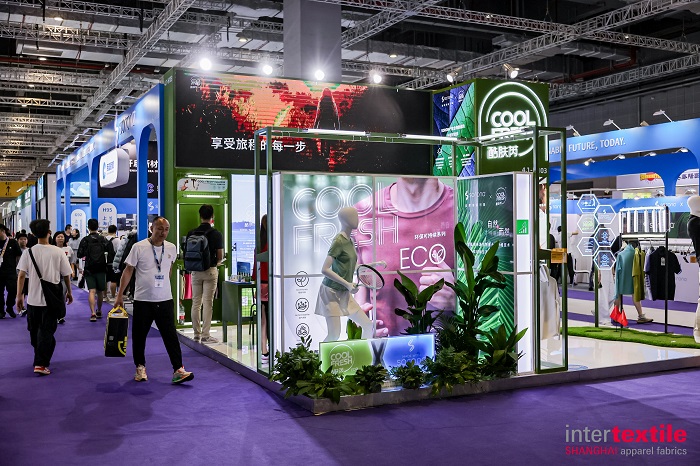
The Cube served as an immersive environment where functional fashion concepts came alive. Dynamic displays showcased innovative garments and accessories, highlighting their versatility and impact on modern living:
Adaptive Activewear: A sportswear collection demonstrated how garments could adjust to changing body temperature and activity levels, offering optimal comfort and performance.
Sustainable Workwear: A line of workwear crafted from recycled and bio-based materials showcased durability and style, proving that environmental consciousness doesn't have to compromise functionality.
"The Cube truly embodied the convergence of style and purpose. It's a testament to how functional fashion can seamlessly integrate into our lives, enhancing our experiences without sacrificing aesthetics." Quoted David Wang, a The Cube visitor. On the same lines, shared a renowned fashion designer, "The Cube has been a revelation. It's inspiring to see how functional fabrics can be used to create such beautiful and practical clothing. It's a testament to the versatility and potential of these materials."
Fringe Highlights: Pioneering a sustainable future
The fringe events at Intertextile Shanghai 2024 emphasized the growing commitment to sustainability in the functional fashion industry:
"Make Fashion More Sustainable with Bio-Derived LYCRA": This session explored how bio-based materials can reduce environmental impact while retaining the performance benefits of synthetic fibers."Sustainability is no longer an option; it's a necessity," said one expert. "We need to find ways to create high-performing fabrics without compromising the planet."
"Building Global Synthetic Technology & Innovation in a Sustainable Way": Industry leaders discussed strategies for developing and adopting sustainable practices throughout the synthetic textile supply chain."Innovation is key to creating a more sustainable future for fashion,"noted a panellist. "We're constantly pushing the boundaries to develop new materials and processes that reduce our environmental impact."
"From Chemical Laboratory to Consumer: The Multiple Imaginations of a Bio-Based Fibre": This presentation traced the journey of a bio-based fiber from its conception to its incorporation into consumer products, showcasing the potential for sustainable innovation."It's fascinating to see the entire process," remarked one of the attendees. "It highlights the complexity and ingenuity behind sustainable fashion."
"Sustainability is at the heart of the functional fashion movement. It's about creating products that not only perform but also contribute to a healthier planet." - Maria Rodriguez, Sustainability Consultant
A vision for Functional Fashion's future
Intertextile Shanghai 2024 offered a glimpse into the future of functional fashion, where innovation, sustainability, and style converge. Through its diverse range of activities, the event showcased the transformative power of clothing to enhance our lives and protect our planet. Functional fashion is more than a trend; it's a testament to the ever-evolving relationship between fashion and technology. It's about clothing that empowers, adapts, and supports us in every aspect of life. The future of fashion is functional, sustainable, and inspiring.
The American Association of Textile Chemists and Colorists (AATCC) is hosting its new Textile Testing Workshop for Specifiers on September 17-18 at the AATCC Technical Center, following the success of its Color Management Workshop held August 14-15. This hands-on workshop aims to equip designers, product managers, and marketers with essential knowledge about textile testing, including key tests for different product categories and performance claims.
The Color Management Workshop received high praise from a diverse group of industry professionals such as merchandisers, retailers, and designers. Attendees explored fundamental color principles, the impact of lighting on color perception, and methods for creating cost-effective color palettes. The workshop also addressed digital color program implementation and shade control throughout the production process, providing actionable strategies for enhancing color management expertise.
The upcoming Textile Testing Workshop will focus on understanding standardized testing, interpreting results, and applying testing insights to product development and performance claims. Participants will gain practical skills for making informed decisions on textile product selection and approval. The workshop includes access to AATCC’s expert staff, luncheons, breaks, and digital copies of key reference materials.
By emphasizing reliable textile testing, the workshop supports innovation and quality assurance, ensuring products meet specifications, comply with regulations, and deliver promised performance. This initiative continues AATCC’s tradition of advancing industry knowledge and standards since 1921.
Kraig Biocraft Laboratories, Inc. has successfully completed the second phase of its spider silk production expansion, transitioning its manufacturing operations to a newly constructed, larger facility. This move follows the success of the spring production trials and the strategic plan to scale production in two phases.
The first phase, completed in July, provided the necessary space for operations during the rainy season. The second phase involved constructing a new production center, which began in July and has now significantly increased the company's rearing capacity by over eight times. This facility includes dedicated production areas for BAM-1 parental lines and a BAM-1 hybrid hatchery, ensuring the company meets its production goals through 2025.
As Kraig Labs transitions equipment to the new center, they are also installing backup power systems in preparation for the upcoming production cycle. Scheduled to start later this month, this cycle will be the largest single-cycle rearing of BAM-1 parental strains in the company's history, fully utilizing the expanded facility.
COO Jon Rice highlighted that the new facility is crucial for maximizing production output and advancing the company's commercial-scale spider silk manufacturing efforts in 2024.
Cinte Techtextil China 2024, scheduled from 19 to 21 September, will bring together industry leaders, innovators, and academic experts to discuss the future of technical textiles and nonwovens. A highlight of the event is a panel discussion on "Innovation as a Driver for Sustainability: Managing Complex Requirements in the Global Textile Industry," featuring TUV Rhein land and Zhejiang University’s Prof Bai Hao. The session will explore the role of digitisation and material innovation in reducing environmental impact, moderated by sustainability expert Karl Borgschulze.
Borgschulze will also lead two sustainability tours focusing on Mobiltech exhibitors and other key industry players, showcasing sustainable products and services. Another significant presentation is by AiD Lab on automating textile inspection through AI, reflecting the growing importance of efficient manufacturing processes in maintaining market competitiveness.
In the International Hall, Groz-Beckert, a leading German brand, will present their Digital Ecosystem and fine felting needle selection. This daily presentation will demonstrate the company’s quality needle range and innovative needle dispensing trolley.
The 12th edition of the China International Nonwovens Conference (CINC) will focus on "Green Development and Sustainable Innovation of the Nonwovens Industry." Additionally, the "Kingsafe Dangs" National University Students’ Nonwovens Development and Applications Showcase will highlight cutting-edge student research and innovations, with an awards ceremony on 20 September.
Further catering to industry needs, a Protech networking event will address the growing market for safety protection products. The fair’s Innovation Showcase Area will display cutting-edge technology and digital advancements, culminating in the 2024 Innovation Award on 19 September.
CinteTechtextil China 2024 is poised to be an essential platform for the industry’s growth and innovation.

Intertextile Shanghai, a premier textile industry event held from August 27th to 29th, 2024, witnessed the "Digital Solution Zone" emerge as a central hub of innovation and forward-thinking. This dynamic zone brought together cutting-edge technologies, thought-provoking discussions, and practical demonstrations that underscored the transformative power of digital solutions in the textile landscape.
InnoTex: Nanotechnology and textiles - A new frontier
The InnoTex section captivated attendees with its exploration of the intersection between nanotechnology and textiles. Nanotechnology, the manipulation of matter on an atomic and molecular scale, is ushering in a new era of textile possibilities.
A leading textile manufacturer showcased how nano-coatings have revolutionized their product offerings. By incorporating nanoparticles into fabrics, they achieved remarkable water resistance, stain repellence, and antimicrobial properties. This case study underscored the practical benefits of integrating nanotechnology into textile production."Nanotechnology is not just a buzzword; it's a game-changer for the textile industry. We're only scratching the surface of its potential."According to Dr. Li Wei, Nanotechnology Researcher
Intertextile Forum: Digital and Intelligent Innovation
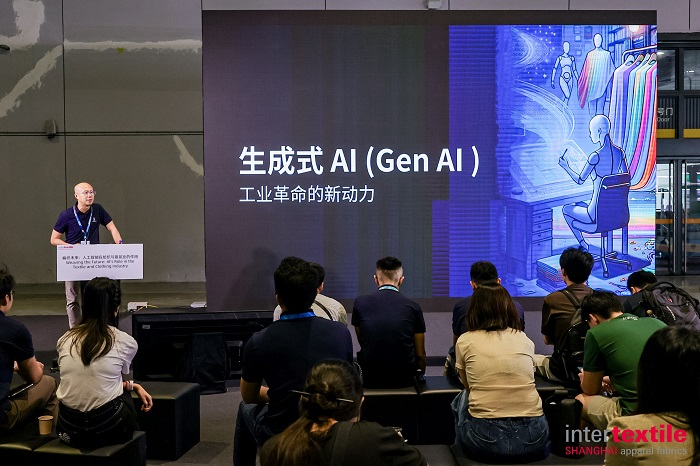
The Intertextile Forum served as a platform for industry leaders to discuss how digital and intelligent innovation is driving quality improvements, efficiency gains, and new development momentum in the textile sector.
Keynote Speech: The Future of Textile Manufacturing A visionary keynote speaker painted a picture of a future where textile manufacturing is characterized by hyper-connectivity, data-driven decision-making, and automation. He emphasized that embracing digital transformation is not just an option but a necessity for companies to remain competitive.
Panel Discussion: Challenges and Opportunities A panel of industry experts delved into the challenges and opportunities associated with digitalization. They stressed the importance of upskilling the workforce, fostering a culture of innovation, and collaborating across the supply chain to unlock the full potential of digital technologies.
"Digitalization is not an option but an imperative for textile companies seeking to thrive in the 21st century,"emphasized Mr. Zhang Ming, CEO of a leading textile manufacturer.
Textile Industry Application Forum: AI/3D assistance
The Textile Industry Application Forum shed light on the pivotal role of AI and 3D technologies in streamlining textile design, production, and marketing processes.
3D Design Showcase A leading fashion brand demonstrated how 3D design software has transformed their workflow. By creating virtual prototypes, they reduced time-to-market, minimized waste, and enhanced collaboration between designers and manufacturers."AI and 3D technologies are not just about efficiency; they're about creativity. They empower us to push the boundaries of what's possible in textile design." Says Maria Rodriguez, Fashion Designer.
"AI and 3D are game-changers for the textile industry, enabling us to design, develop, and produce textiles with unprecedented speed and precision," remarked Wang Lin, a renowned fashion designer.
Threads of Innovation: Pathway to Next-Gen materials
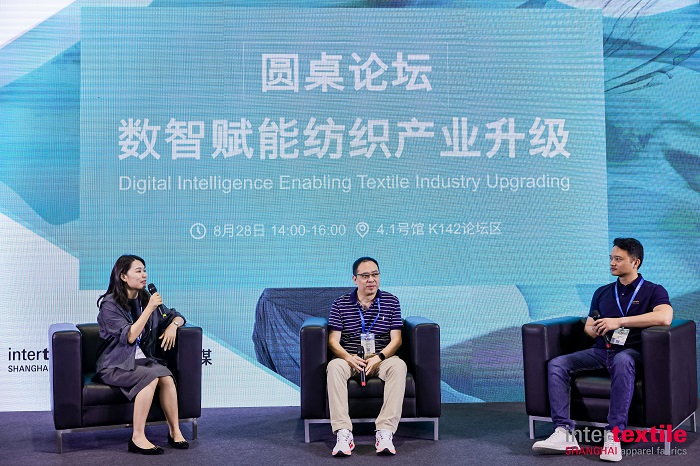
This seminar, led by HK Rita, provided a fascinating glimpse into the future of textile materials. It explored how emerging technologies are paving the way for next-generation materials with enhanced performance, sustainability, and functionality."We are committed to creating textiles that are not only beautiful but also functional and sustainable. Innovation is at the heart of everything we do," stated Ms. Rita Cheng, CEO of HK Rita.
Bio-based Textiles The seminar highlighted the growing trend of using bio-based materials, such as plant fibres and algae, to create textiles. These materials offer a sustainable alternative to traditional petroleum-based fibres.
Smart Textiles Attendees learned about the exciting field of smart textiles, which incorporate sensors and electronics to create fabrics that can interact with the environment. Smart textiles have applications in healthcare, sports, and fashion.
The Digital Solution Zone at Intertextile Shanghai 2024 served as a powerful testament to the transformative impact of technology on the textile industry. Through Innotex, the Intertextile Forum, the Textile Industry Application Forum, and Threads of Innovation, attendees were exposed to the latest advancements and their potential to drive innovation, efficiency, and sustainability. This immersive experience left a lasting impression on visitors, inspiring them to embrace the digital revolution and shape the future of textiles.

The recent Intertextile Shanghai 2024, held from August 27-29, underscored a powerful message: sustainability is no longer a buzzword but a core imperative for the textile industry. Amidst the vibrant displays of innovative fabrics and cutting-edge technologies, the spotlight shone brightly on a series of dedicated initiatives and activities that championed a greener and more responsible future for fashion.
TextpertiseEconogy: Knowledge is power
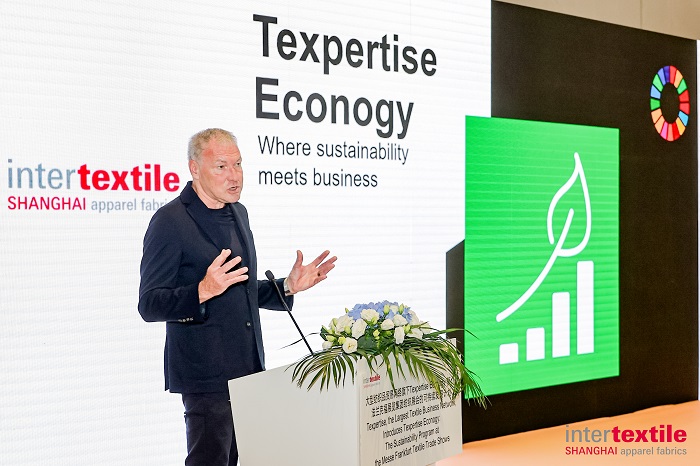
The Econogy Hub served as the epicenter for knowledge exchange, buzzing with insightful discussions and thought-provoking presentations. A diverse line up of experts and industry leaders shared their expertise and experiences on various topics. The Econogy Talks, for instance, featured a session titled "A Green Revolution is Coming: What Does the European Green Deal Mean for the Textile Industry and What Can Your Business Do to Adapt?".
"The European Green Deal sets ambitious targets for the textile industry, challenging us to rethink our processes and practices. We need to embrace circularity, adopt sustainable materials, and reduce our environmental footprint. This is not just about compliance; it's about future-proofing our businesses and ensuring a healthy planet for future generations.", said one of the speakers
A captivating case study presented, a story of a leading fashion brand that successfully transitioned to a circular business model, demonstrating how sustainable practices can drive innovation and boost brand reputation.
Econogy Tour: Experiencing sustainability first-hand
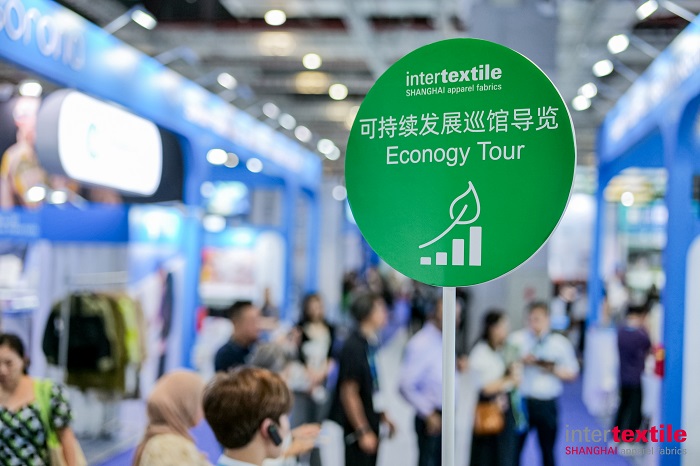
The Econogy Tour offered a unique opportunity to witness sustainable practices in action. Participants visited factories and showrooms that exemplified eco-friendly production methods, such as water recycling, energy-efficient machinery, and the use of organic and recycled materials.
"The Econogy Tour was eye-opening. It was inspiring to see how companies are implementing sustainable practices at every stage of the production process. It gives me hope that we can create a more sustainable fashion industry." Said one of the participants.
The Sustainability Zone: A showcase of innovation
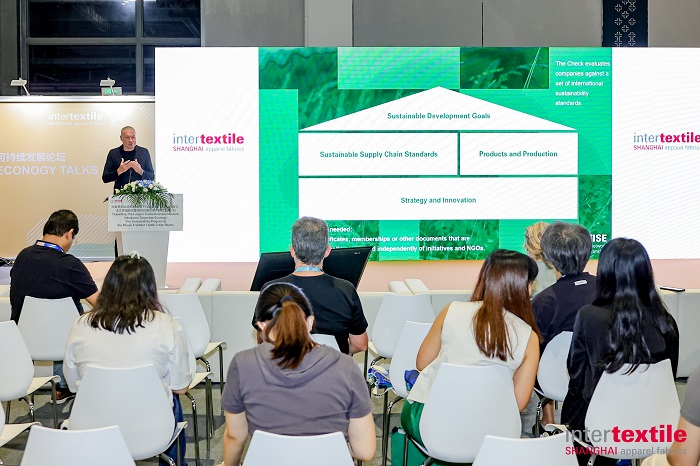
The Sustainability Zone was a vibrant hub showcasing a diverse array of sustainable products and solutions. Exhibitors proudly presented fabrics made from recycled materials, innovative dyeing techniques that minimize water pollution, and technologies that promote transparency and traceability in the supply chain.
Fringe Highlight: "A Green Revolution is Coming"
The fringe session titled "A Green Revolution is Coming: What Does the European Green Deal Mean for the Textile Industry and What Can Your Business Do to Adapt?" sparked a lively debate among attendees. The discussion explored the implications of the European Green Deal for the global textile industry and offered practical insights on how businesses can navigate the changing regulatory landscape and embrace sustainable practices.
Overall impact
The strong emphasis on sustainability at Intertextile Shanghai 2024 signalled a clear shift in the industry's mindset. The comprehensive range of activities provided valuable knowledge, inspiration, and practical solutions for businesses seeking to embark on a sustainable journey. The event underscored the fact that sustainability is not just a responsibility; it's an opportunity for innovation, growth, and a more resilient future for the textile industry.
On September 11, US Representatives Rosa DeLauro (D-CT), Earl Blumenauer (D-OR), and Tom Suozzi (D-NY) will lead a press conference to demand President Biden use executive authority to close the de minimis loophole. The loophole allows four million daily packagesmostly from Chinato enter the US without inspection, bypassing taxes, tariffs, and penalties on banned goods, including those made with forced labor.
Over 100 House Democrats have signed a letter urging Biden to act after Republicans blocked legislative efforts. The loophole is increasingly exploited by criminals, including drug cartels, to import dangerous goods like fentanyl, posing a significant threat to American consumers.
Speakers include leaders from Shatterproof, the National Association of Police Organizations, the National Council of Textile Organizations (NCTO), and Rethink Trade.
Storm Creek, a pioneer in sustainable apparel within the promotional products sector, has announced its partnership with Bluesign as a system partner, making it the first brand in the industry to do so. This collaboration underscores Storm Creek's commitment to sustainability, with a pledge to exclusively use Bluesign Approved fabrics by 2025.
Storm Creek’s 2025 product catalog will showcase items crafted entirely from Bluesign certified fabrics, reflecting their commitment to minimizing environmental impact and endorsing responsible production. Doug Jackson, Founder and President of Storm Creek, highlighted that the partnership enhances their sustainability efforts. The company seeks to motivate promotional product distributors to adopt eco-friendly practices, thereby increasing the positive effects on end buyers. Storm Creek is dedicated to setting a benchmark for sustainability in the promotional products industry.
Storm Creek’s commitment to Bluesign standards aligns with their mission to deliver high-performance, eco-friendly apparel, ensuring both product safety and sustainability. The inclusion of Storm Creek in the Bluesign System marks a significant step forward. Daniel Rufenacht, CEO of Bluesign Technologies AG noted that Storm Creek’s pledge to use 100 per cent Bluesign Approved fabrics by 2025 sets a strong example for sustainability within the industry.
This partnership highlights Storm Creek’s role in driving a sustainable transformation in the promotional products market.
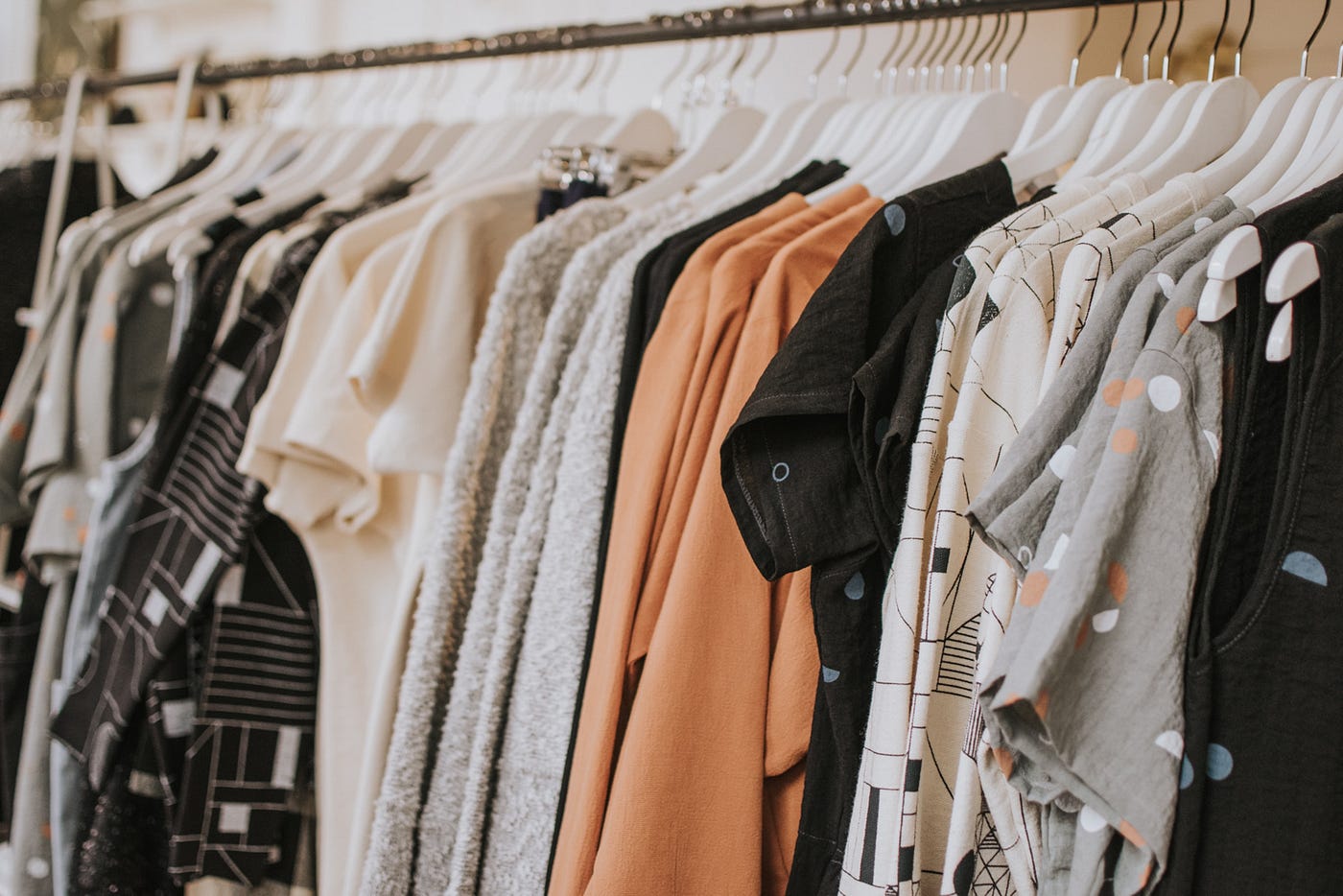
A damning new report, ‘What Fuels Fashion?’, has exposed the fashion industry's abysmal track record on climate action. The report, which analyzed 250 of the world's largest fashion brands, reveals a shocking lack of transparency and ambition in addressing the industry's significant carbon footprint. The report, a special edition of the annual ‘Fashion Transparency Index’, grades brands on their disclosure of climate and energy-related data, primarily focusing on supply chain emissions. The average score was a dismal 18 per cent, with a 13 per cent of major brands receiving a zero rating, highlighting the industry's overall failure to prioritize climate change. In fact, a staggering 32 brands scored a zero, indicating a complete absence of climate-related disclosures.
Highlights of the study
Lack of commitment to decarbonisation: Nearly a quarter of brands disclosed no information on decarbonisation, while less than half had Science-based targets covering their entire value chain.
Missing climate targets: Almost 86 per cent companies lacked a public coal phase-out target, and 94 per cent had no public renewable energy target.
Transparency gap: Most brands (89 per cent) did not disclose annual clothing production, and nearly half failed to reveal raw material emissions.
Focus on false solutions: While many brands touted sustainable materials, only a fraction disclosed their supply chain's energy sources.
Supplier burden: Despite being major emitters, 94 per cent of brands failed to disclose investment in supply chain decarbonisation, often shifting costs onto suppliers.
Worker neglect: Almost no brands engaged with workers affected by climate change, with 94 per cent lacking disclosure on such efforts.
Renewable energy advocacy failure: Only 13 per cent brands disclosed renewable energy advocacy in their supply chains, and just 2 per cent shared the outcomes.
Supply chain reliance on coal: Despite 96 per cent of fashion's emissions originating in manufacturing, only 8 per cent of brands had a renewable electricity target for their supply chain.
Just transition overlooked: The majority (96 per cent) of brands lacked a public commitment to a Just Transition strategy, with only 4 per cent disclosing efforts to support supply chain workers.
Table: Key performance indicators
|
Average Brand Score |
18% |
|
Brands with 0% Rating |
32/250 (13%) |
|
Brands with Decarbonization Disclosure |
75% |
|
Brands with Science-Based Targets (SBTs) |
47% |
|
Brands Disclosing Progress Against SBTs |
42% |
|
Brands with Public Coal Phase-Out Target |
14% |
|
Brands with Public Renewable Energy Target |
6% |
|
Brands Disclosing Annual Clothing Production |
11% |
|
Brands Disclosing Supply Chain Energy Sources |
11% |
|
Brands Investing in Supply Chain Decarbonization |
6% |
|
Brands with Public Commitment to Just Transition |
4% |
|
Brands Disclosing Renewable Energy Advocacy |
13% |
Industry experts point out, these findings are deeply concerning. The fashion industry is a major contributor to climate change, yet it's failing to take responsibility. Brands must prioritize decarbonisation, invest in supply chain sustainability, and support workers affected by the crisis. Some others say, the fashion industry is in a state of climate denial. This report is a wake-up call. We need urgent action to decarbonise the sector and protect both the planet and the people who make our clothes.
The report calls for increased transparency, ambitious climate targets, and fair financing for the transition to a low-carbon fashion industry. It also emphasizes the importance of including workers and communities in the decision-making process to ensure a just transition.












